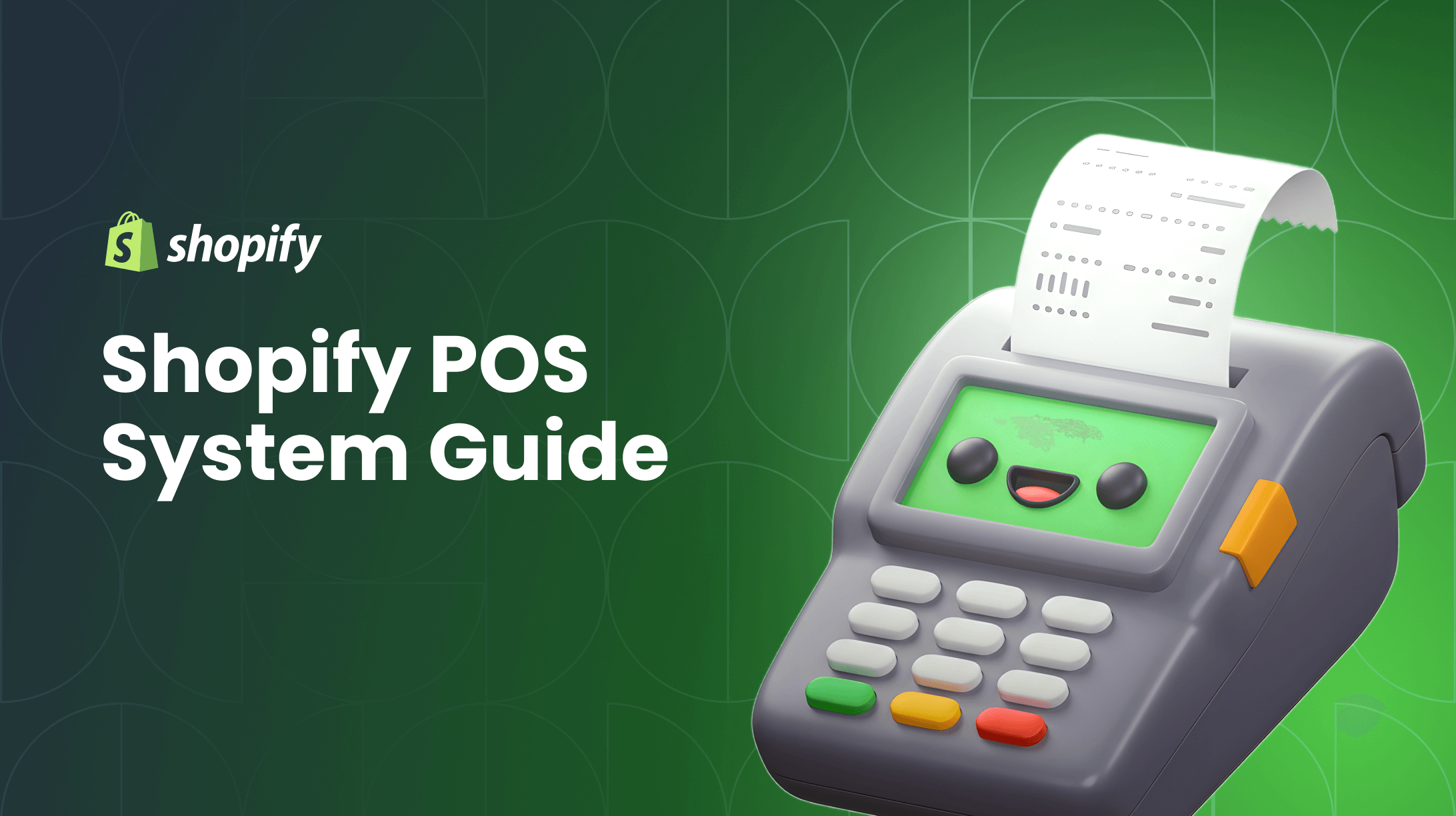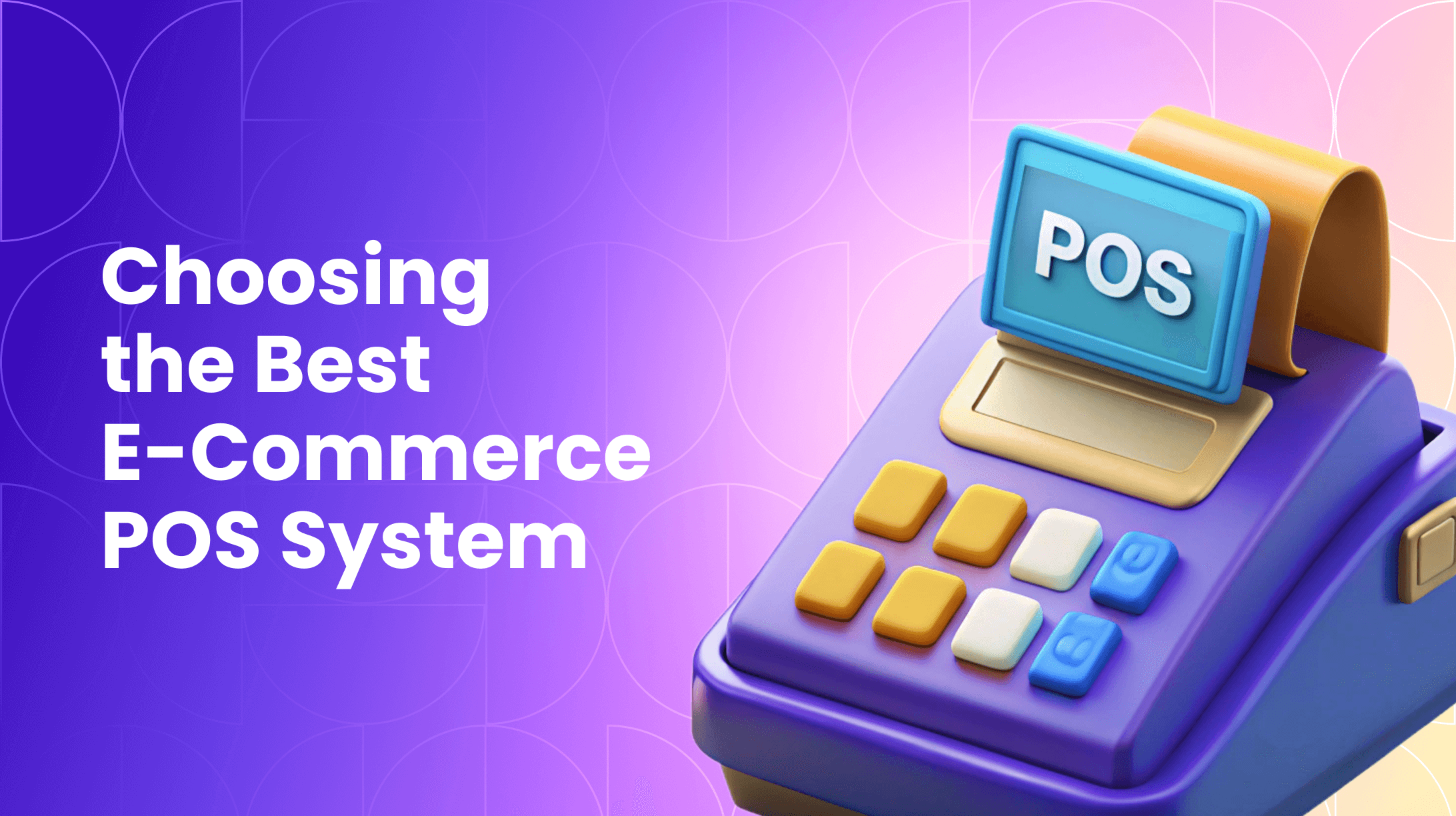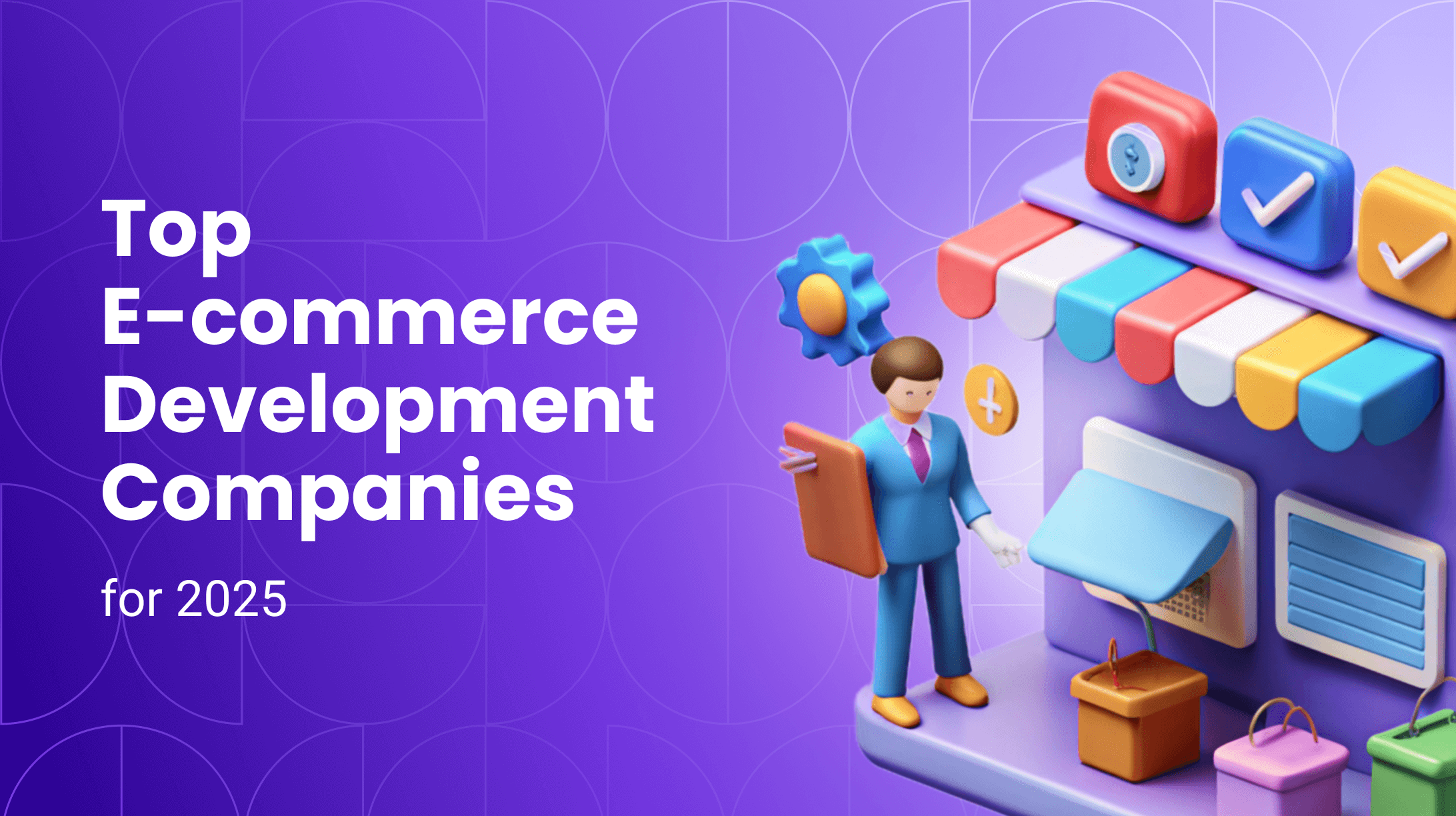0%

Of the 2.64 billion global digital shoppers, a staggering 73% use multiple channels during their retail journey, yet many businesses struggle to unify these touchpoints. This fragmentation creates operational inefficiencies, inconsistent customer experiences, and a blurred view of inventory and sales data.
This article explores how the Shopify POS software streamlines sales operations with its robust features, competitive pricing, and easy setup, which ensures a seamless retail experience for both business owners and customers.
If your business seeks customized solutions, professional Shopify development services can enhance this integration for you and ensure a seamless retail experience that serves both you and your customers.
What Is Shopify POS?
Shopify POS (Point of Sale) is the hardware and software system provided by Shopify that allows merchants to process transactions and manage their business in person, while seamlessly synchronizing every sale, customer, and inventory update with their online Shopify store.
In essence, e-commerce POS is the bridge that connects your physical retail location to your digital e-commerce presence, unifying all operations within one central platform.

There are two versions of Shopify POS:
- The Lite version is included with all Shopify plans, offering essential features suitable for smaller businesses.
- The Pro version, priced at an additional $89 per month, per location, provides advanced features like unlimited registers and smart inventory management, ideal for larger retailers with more complex needs.
Key Features of Shopify POS
Shopify POS is packed with features designed to streamline your in-store operations, empower your staff, and unlock a unified commerce experience.
Omnichannel Integration
Shopify POS seamlessly integrates with your online store, allowing for real-time synchronization of sales, inventory, and customer data across all channels. This ensures a consistent shopping experience, whether customers interact online or in-store, helping businesses streamline operations and boost customer satisfaction.
Inventory Management
With real-time inventory tracking, Shopify POS helps you manage stock levels efficiently across all locations. You can set up automatic alerts for restocking and prevent overselling, ensuring that you always have the right products on hand to meet customer demands.
Payment Processing
Accept a wide variety of payment methods, including major credit cards, Apple Pay, Google Pay, and other digital wallets. Shopify POS’s secure payment processing provides protection against fraud and ensures fast, reliable transactions, enhancing the customer checkout experience.
User-Friendly Interface
The intuitive design of Shopify POS makes it easy for staff to learn and operate, minimizing training requirements and reducing human errors. With a clean, straightforward interface, employees can focus on delivering excellent customer service.
Customer Profiles
Build detailed customer profiles that track purchase history, preferences, and interactions. This information allows you to personalize marketing efforts and recommend products, improving customer loyalty and engagement by making shopping more relevant and personalized.
Sales Reporting
Access in-depth sales analytics and reports directly from the POS system. This feature provides insights into sales trends, best-selling products, and peak shopping times, enabling you to make informed business decisions and optimize strategies for growth.
Hardware Compatibility
Shopify POS supports a wide range of hardware, including barcode scanners, receipt printers, and cash drawers. This compatibility allows you to set up a fully equipped sales station that suits your business needs and enhances operational efficiency.
24/7 Support
Benefit from Shopify's comprehensive support network, which is available around the clock to help resolve issues quickly. Access to dedicated customer support ensures your operations run smoothly, minimizing downtime and maximizing efficiency.
Shopify POS Pricing
Shopify POS is not a standalone product, it is a feature included with all paid Shopify plans. The main cost involves your monthly subscription fee, plus any applicable payment processing fees and hardware costs.
The right plan for you depends entirely on your business's size, number of locations, and required in-person features. Let's take a look:
| Plan & Monthly Cost | Best For | Key POS Features Included | Payment Processing Fee (In-Person) |
Basic Shopify ($29 USD/mo) | New businesses or pop-up shops selling in person | Core POS features, unlimited products, basic sales reports | 2.7% + 0¢ per transaction |
Shopify ($79 USD/mo) | Growing businesses with one or more retail locations | All Basic features, plus professional reports, staff accounts (5), and international pricing | 2.5% + 0¢ per transaction |
Advanced Shopify ($299 USD/mo) | Scaling businesses with complex, multi-location operations | All Shopify features, plus advanced report builder, custom report creation, and staff accounts (15) | 2.4% + 0¢ per transaction |
Shopify Plus ($2,300+ USD/mo) | High-volume enterprises requiring a customizable, scalable solution | A fully customizable platform with dedicated support, API integrations, and higher levels of security | Custom, negotiated rates |
Additional Costs to Consider:
- Payment Processing Fees (Online) – Each plan has a separate, slightly higher fee for online transactions.
- Hardware – You will need to purchase compatible hardware. Shopify offers kits (like the Shopify POS Go) starting at $249 USD, or you can buy individual components like card readers (from $49 USD), stands, and receipt printers.
- Staff Accounts – The Basic plan includes 2 staff accounts. Additional accounts require upgrading to a higher plan.
Get in touch
with our expert
Discuss your project requirements and get a free estimate.
Get in touch
with our expert
Discuss your project requirements and get a free estimate.
Getting Started with Shopify Point of Sale System
Shopify POS setup is a straightforward process that integrates your physical store with your online operations. It can be broken down into a few key phases, from initial preparation to training your team.
1. Preparation and Requirements
Before you begin, you’ll need an active Shopify subscription: any plan from Basic to Advanced will include access to Shopify POS. You’ll also need a compatible smartphone or tablet (iOS or Android) and, optionally, hardware such as a card reader, barcode scanner, or receipt printer. Shopify offers tailored hardware kits to simplify this step.
2. Configuring Your Store Settings
Start in your Shopify admin dashboard online. Here, you’ll add your products (including titles, prices, variants, and barcodes) either manually or via CSV import. Accurate SKUs and barcodes are essential for in-store scanning.
Next, configure your tax settings and add your physical store as a “location” to sync inventory accurately between online and offline channels. Finally, set up staff accounts with specific permissions to control what each team member can access.
3. Installing the Hardware and App
Download the Shopify POS app from the App Store or Google Play and log in with your store credentials. Your products, customers, and inventory will sync automatically. Then, connect your hardware (such as a card reader or printer) via Bluetooth directly through your device settings.
4. Testing and Training
Before going live, run test transactions to ensure sales, returns, discounts, and receipts work smoothly. Train your staff on how to use the app’s main features, such as processing sales, managing customer profiles, and checking inventory.
Shopify POS vs. Competitors: Which is Right for You?
Shopify POS offers a strong solution, but understanding its features compared to other platforms is key. Your decision should align with your business priorities, whether they are seamless integration, cost-effectiveness, or comprehensive retail capabilities.
The following table provides a high-level comparison of Shopify POS against two of its most common competitors: Square for small businesses and pop-ups, and Lightspeed Retail for established, inventory-heavy retailers.
| Feature | Shopify POS | Square POS | Lightspeed Retail |
| Best For | E-commerce businesses expanding into retail; brands that prioritize a unified online and in-store experience. | Small businesses, pop-ups, and quick-service restaurants; businesses that need a free, simple-to-start solution. | Complex inventory-based businesses; brick-and-mortar stores with large SKU counts, like boutiques or specialty goods. |
| Core Strength | Seamless Omnichannel Integration. Unifies online and offline sales, inventory, and customers into a single platform. | Simplicity and Free Entry Point. Extremely easy to set up with a transparent, pay-as-you-go pricing model. | Advanced Inventory Management. Deep, granular controls for complex product variants, bundles, and purchase orders. |
| Pricing Model | Paid monthly Shopify plan required (starting at $29/mo). | Free software with optional paid Premium plans for advanced features. | Paid monthly plan required (starting around $69/mo). |
| E-Commerce | Deeply Integrated. The POS is an extension of a full-featured, top-tier e-commerce platform. | Basic. Offers a simple online store, but it lacks the depth and scalability of Shopify's online tools. | Add-On. E-commerce is available as a separate, paid product that integrates with the POS. |
| Hardware Cost | Moderate. Kits start at $249. Compatible with a range of first and third-party devices. | Very Flexible. Offers a wide array of affordable hardware options, with readers starting at $49. | Moderate to High. Offers proprietary hardware bundles similar to Shopify. |
Choose Shopify POS if you have (or plan to have) a significant online sales presence and want every aspect of your business—from your online store to your physical checkout counter—to operate in perfect sync.
Operating with Efficiency: Tips and Best Practices
Implementing Shopify POS is the first step. Using it effectively is what will transform your retail operations. These practical recommendations will help you secure your data, deepen customer relationships, and improve daily workflow.
1. Standardize Product Information
Create and enforce a consistent format for all product data. This includes using a logical SKU numbering system, uniform product naming conventions, and reliable barcode labels. Clear standards prevent duplicate entries and ensure inventory counts remain accurate across your online store and physical locations.
2. Schedule Regular Inventory Audits
While Shopify POS updates inventory in real-time, periodic physical counts are essential. Regular audits help identify discrepancies, uncover issues like unrecorded loss or receiving errors, and maintain the integrity of your stock levels.
3. Leverage Customer Purchase History
Train your team to consult customer profiles during interactions. Understanding a customer’s previous purchases, whether online or in-store, enables personalized recommendations and fosters stronger customer relationships.
4. Optimize Checkout for Data Collection
Use the point of sale interface to seamlessly gather customer contact information. Position this as a value exchange, such as offering digital receipts or exclusive updates, to build your marketing list with consent.
5. Tailor Staff Permissions by Role
Assign permissions strategically based on employee responsibilities. Limit cashiers to basic transactions while granting managers access to discounts, reports, and return overrides. This enhances security and reduces operational risks.
6. Embrace Mobile Checkout Options
Maximize the flexibility of mobile devices by performing transactions anywhere in the store. Using smartphones or tablets as secondary registers can reduce wait times, minimize lines, and improve the overall customer experience.
7. Analyze Performance Reports Regularly
Use Shopify’s reporting tools to track more than just sales. Review employee performance, category profitability, and hourly traffic patterns. These insights support informed decisions about staffing, purchasing, and sales strategies.
8. Secure Your Hardware and Accounts
Protect devices with strong passwords, enable encryption, and ensure staff use unique login credentials. Basic security measures safeguard sensitive customer and business data from unauthorized access.
9. Integrate Purpose-Built Apps
Expand your system’s functionality by connecting apps that address specific needs – such as loyalty programs, email marketing, or accounting software. Carefully chosen Shopify integrations streamline operations and enhance customer engagement.
Final Thoughts
The right Shopify POS version and plan will align with your business goals and operational needs. When you understand the available features and costs, you can make an informed decision that improves efficiency and elevates the customer experience. Evaluate your priorities, such as seamless integration, extensive retail tools, or cost effectiveness, to select the ideal solution for your retail operations.
FAQ
How to set up Shopify POS?
To set up Shopify POS, first download the Shopify POS app and connect it to your Shopify store account. Next, select your hardware, such as card readers and barcode scanners. Follow the in-app instructions to configure settings like taxes, discounts, and payment methods, then start processing sales.
What is POS Lite on Shopify?
POS Lite is the basic version of Shopify's point of sale system, included with all Shopify plans. It covers essential features such as product tracking, order management, and basic reporting, ideal for businesses with straightforward sales needs.
What is Shopify POS Pro?
Shopify POS Pro is an advanced version offering features tailored for larger or more complex operations. It includes unlimited registers, detailed reporting, staff management tools, and omnichannel selling capabilities, available for an additional monthly fee per location.
How much is Shopify POS?
Shopify POS Lite is included with your subscription, while POS Pro costs an additional $89 per location each month. Hardware costs, such as card readers and receipt printers, are additional expenses to consider.
How does Shopify point of sale work?
Shopify point of sale integrates with your online store, allowing you to manage in-person sales seamlessly. It processes transactions, manages inventory, and provides sales insights through its app-based interface, ensuring a connected and efficient retail operation.

Written with the assistance of Sergey Girlya
Adobe Commerce Business Practitioner | Certified PSM & PSPO at TA
Sergey ensures project success by validating business cases, defining success metrics, and identifying sustainable benefits. His proactive approach leverages existing systems, processes, and data to deliver additional value. Serge excels in planning, executing, monitoring, and controlling all aspects of the project lifecycle, ensuring meticulous attention to detail and strategic oversight.
Sergey ensures project success by validating business cases, defining success metrics, and identifying sustainable benefits. His proactive approach leverages existing systems, processes, and data to deliver additional value. Serge excels in planning, executing, monitoring, and controlling all aspects of the project lifecycle, ensuring meticulous attention to detail and strategic oversight.


